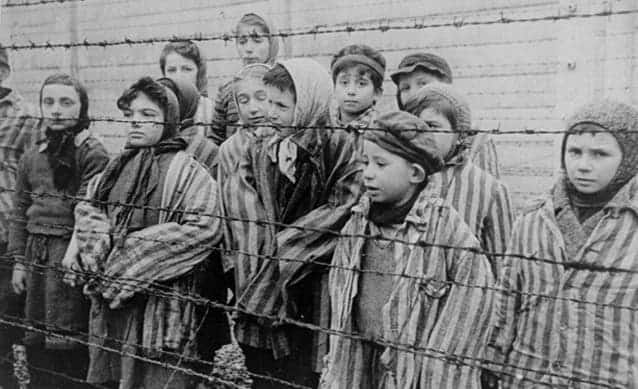It seems environmental cues like smoking, fat intake, even trauma cause alterations to gene activity and expression, all while keeping the DNA sequence intact. Epigenetics is the study of such genetic alterations caused by physiological and psychological environmental exposure and the big question in the field right now is whether these genetic modifications are passed down from one generation to the next. One recent study seems to suggest that epigenetic modifications are indeed inheritable.
Holocaust survivors, for instance, passed down genetic changes associated with stress disorder (the modification was there initially for obvious reasons) to their children. These alterations were not witnessed in the control group and mark the first evidence “of transmission of pre-conception stress effects resulting in epigenetic changes in both the exposed parents and their offspring in humans,” said Rachel Yehuda, the led researcher.
Yehuda and colleagues sequenced the genomes of 32 Jewish men and women who had either been interned in a Nazi concentration camp, were exposed to torture or persecuted (sometimes all situations applied) during the WWII. The researchers then looked at the genes of the children of the Holocaust survivors, specifically those known to cause stress disorders. Finally, the results were compared with the genes of Jews and their families who lived in the same period, but outside of persecution zones.
“The gene changes in the children could only be attributed to Holocaust exposure in the parents,” said Yehuda.
The most famous illustration of epigenetics is the unfortunate Dutch Hunger Winter, which lasted from the start of November 1944 to the late spring of 1945. During this time, West Holland was still under German control. A German blockade resulted in a catastrophic drop in the availability of food to the Dutch population. At one point the population was trying to survive on only about 30 percent of the normal daily calorie intake. They ate anything they could get their hands on; grass, tulip bulbs, book covers. By the time Holland was liberated in May 1945, some 20,000 people had died of starvation. Epidemiologists have been able to follow the long-term effects of the famine, but what they found completely blew their minds.
Mothers well fed around the time of conception, but malnourished only for the last few months of pregnancy gave birth to babies to smaller babies, on average. On the other hand, mothers who were malnourished for the first three months of pregnancy, but where then well fed (the blockade was lifted) were likely to birth normal-size babies. The fetus “caught up” in body weigh, sort of speak. That’s pretty straightforward so far, but in the course of the decades doctors have been following the babies they found those who were born small stayed small all their lives, with lower obesity rates than the general population, despite having access to as much food as they wanted. That’s not all. The children of the mothers who had been malnourished only early in their pregnancies had higher obesity rates than normal. Then, some of the same effects were observed, to a lesser degree, in the children of those who had been born in those troubled time, that is to say, the grandchildren of the malnourished mothers.
But passing down epigenetic changes to offspring is still a controversial idea. It’s an established fact of science that only genes from DNA get passed on, since the genetic information in sperm and eggs shouldn’t be affected by the environmental cues that cause chemical changes in the working genes. Once fertilization occurs, any epigenetic change is thought to be wiped clear. More and more evidence seems to point otherwise. For instance, a study investigated the mechanism that transfers starvation response to future generations – as in the case of the Dutch Hunger Winter – by looking at worms. The researchers discovered that the starvation-responsive small RNAs target genes that are involved in nutrition and that these became inherited by at least three subsequent generations of worm specimens.










